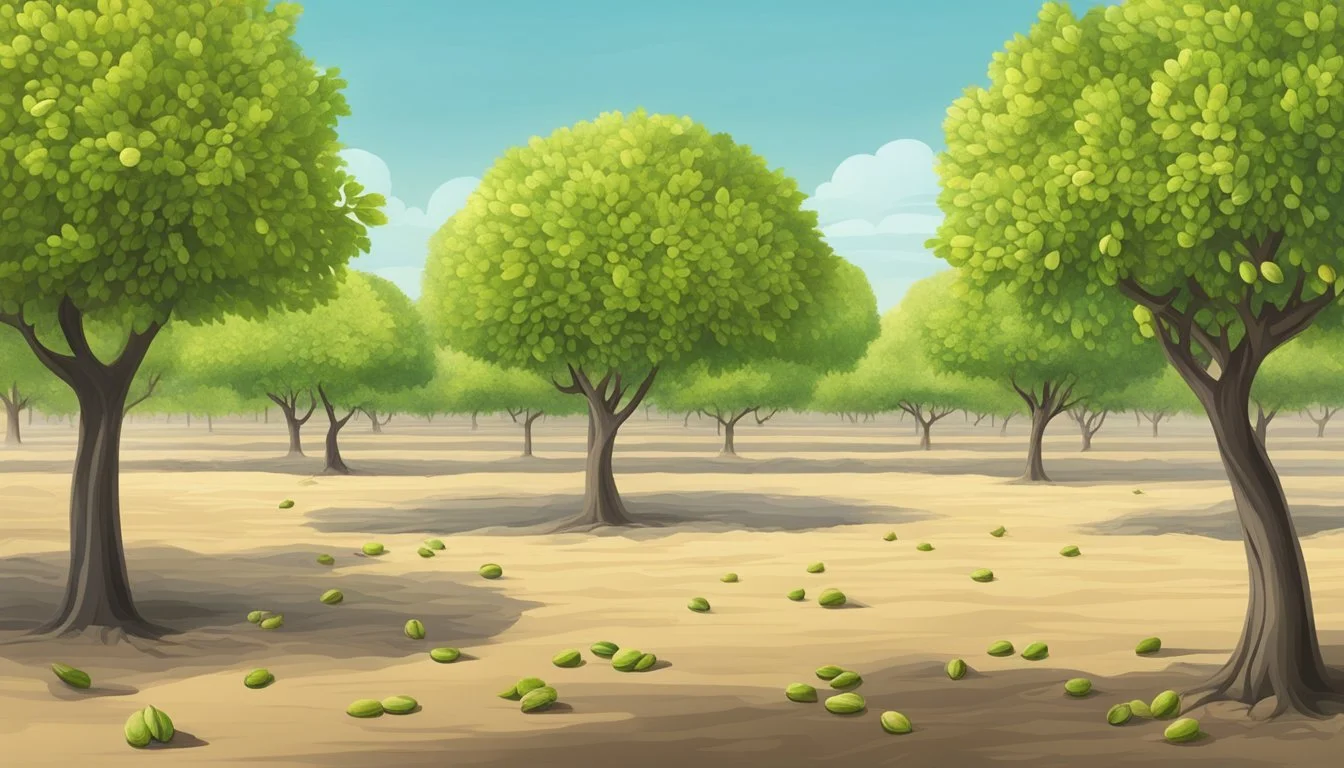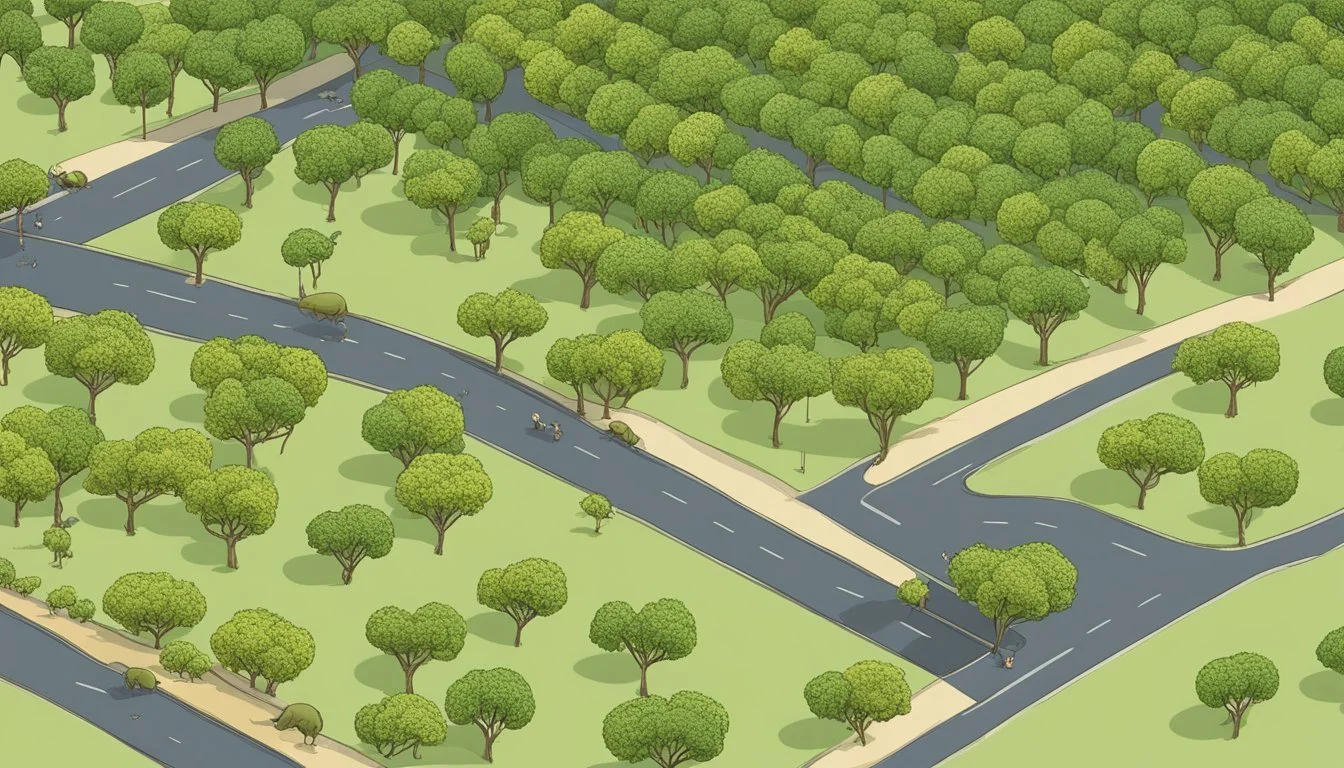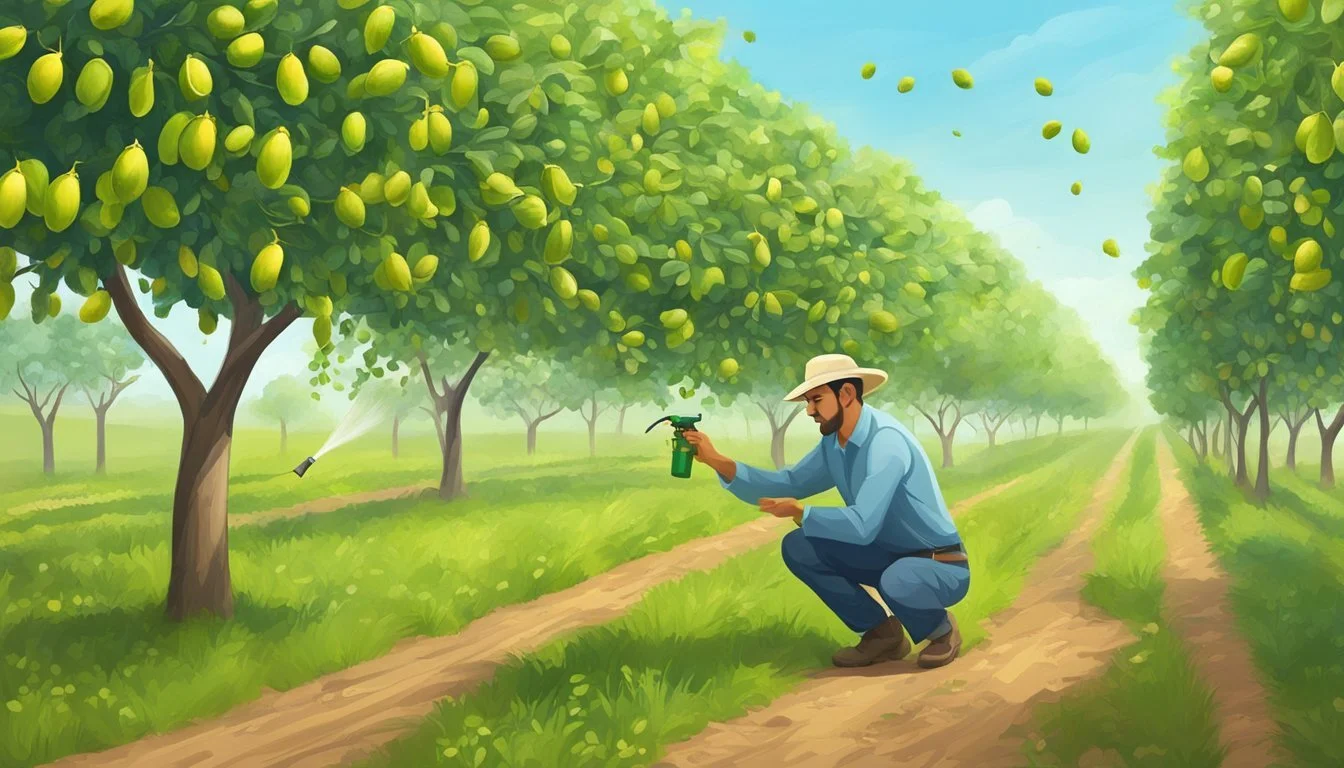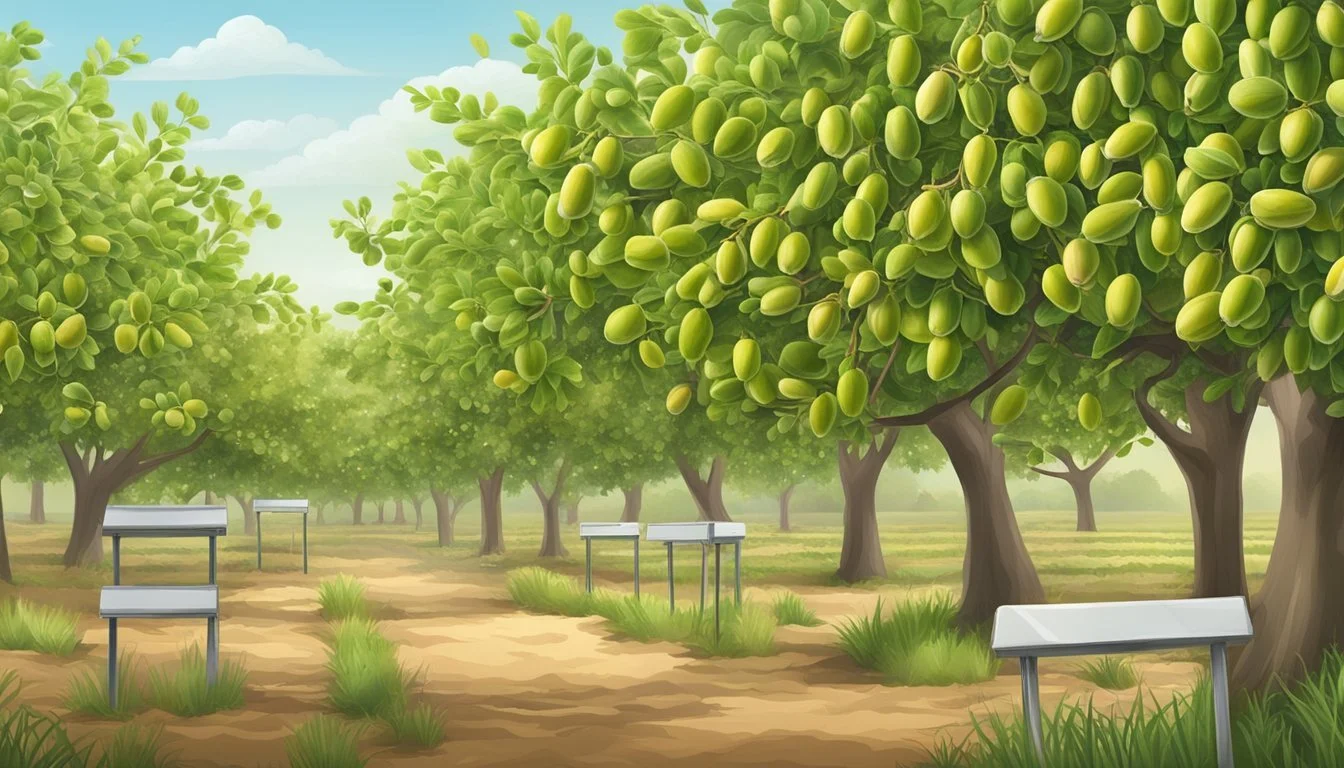Pest Control for Pistachio Groves
Effective Strategies for Healthy Orchards
Effective pest control is a crucial aspect of managing healthy pistachio groves. Pistachios are susceptible to a variety of pests that can affect both the quality and quantity of the harvest. Common pests include the navel orangeworm, leaffooted bugs, and various species of stink bugs, which not only impact the nuts themselves but can also cause long-term damage to the trees. Employing a combination of preventative and reactionary pest management strategies is essential for growers aiming to secure their investment and ensure sustainable crop production.
Pest management in pistachio groves must be meticulous and continuous. Growers should exercise regular monitoring to identify the presence of pests early on, as some can rapidly increase in number due to high reproductive rates and abundance of food. Approaches to controlling pests range from biological methods, like encouraging natural predators, to chemical pesticides. For example, toxins such as Malathion may be used under certain dilution ratios to control specific pests. Such practices should be carefully documented to evaluate their efficacy and form an adaptive pest control strategy tailored to particular grove conditions.
Maintaining the health of pistachio trees through proper nutrition also contributes to pest resistance. Nutritional imbalances can make trees more vulnerable to infestation and disease. Thus, alongside direct pest control measures, growers must ensure that their pistachio trees receive balanced fertilization, adequate irrigation, and are planted in suitable soil. By integrating pest management with overall tree care, pistachio growers can establish a resilient agricultural ecosystem capable of withstanding pest pressures.
Pistachio Pest Identification
Effective pest management in pistachio groves begins with correct identification of the culprits. Below are the main categories of pests that can pose threats to pistachio trees along with specific examples.
Common Insects and Mites
Insects and mites can significantly impact pistachio crop yields. Hemiptera such as various stink bugs and leaffooted bugs are key pests, piercing the nuts and feeding on their contents. In addition, spiders can be found in the orchards, often playing a beneficial role by preying on harmful insects.
Hemiptera (e.g., Redshouldered stink bug, Green stink bug, Consperse stink bug)
Beneficial species (e.g., Predatory spiders)
Diseases and Fungi
Pistachios are susceptible to diseases and fungi that can degrade the quality of the crop and reduce yields. Fungal pathogens like Alternaria and Botryosphaeria cause diseases that may lead to crop losses. It is critical to identify these diseases early to manage and mitigate their spread in the orchard.
Fungal Diseases (e.g., Alternaria, Botryosphaeria)
Rodents and Larger Pests
Rodents and larger pests pose another challenge, often gnawing on bark, leaves, or fruits. Pocket gophers, rabbits, and wild pigs are common examples. Birds can also cause damage by pecking at nuts or young shoots. Control measures for these pests can include a combination of physical barriers, trapping, and habitat management.
Rodents (e.g., Pocket gophers, Meadow voles)
Larger wildlife (e.g., Wild pigs, Coyotes)
Birds (e.g., Pest birds that damage crops)
Pest Life Cycle and Behavior
Effective pest management in pistachio groves hinges on a deep understanding of the life cycle and behaviors of pests, which dictates the optimal timing and methods for control interventions.
Understanding Pest Ecology
Pistachio pests, such as the Ordinary Pistachio Psyllids, exhibit complex life cycles that begin as eggs and progress through multiple larval stages before reaching adulthood. Climatic factors heavily influence the development rate of these pests, with warmer temperatures generally accelerating their life cycle. Recognizing the specific stage—whether egg, larvae, or pupae—is crucial for deploying targeted control methods. For instance, larval stages might be more susceptible to certain biological or chemical treatments.
Additionally, pests in pistachio groves interact with a variety of natural enemies. These predators and parasites play a significant role in managing pest populations. Understanding this ecological web is essential for integrated pest management strategies, leveraging these relationships to keep pest numbers below economic thresholds.
Reproductive Cycles
The reproductive cycles of pistachio pests are often rapid and prolific. An understanding of these cycles enables growers to anticipate and prepare for potential population explosions. For instance, measures taken to control the adult population before they lay eggs can dramatically decrease the number of future larvae, which are the primary feeders and damage-causers to pistachio crops. Detailed records of pest numbers and control outcomes, as emphasized in Managing Vertebrates, are indispensable for predicting and interrupting these reproductive cycles effectively.
Each species has its own specific reproductive timeline affected by environmental conditions. With pests such as the carpophilus beetle identified in the San Joaquin Valley, prompt action is necessary, as outlined in the UC ANR blog, because delays can lead to the rapid establishment of the pest in the area. Monitoring and understanding these cycles is critical for timing control methods for maximum effectiveness.
Cultural Control Mechanisms
In the context of pest management for pistachio groves, cultural control mechanisms are pivotal. These strategies enhance the orchard's environmental conditions to suppress pest populations proactively. They are grounded in ecological principles and play a crucial role in Integrated Pest Management (IPM) programs.
Sanitation Practices
Sanitation is a cornerstone of orchard management and involves meticulous cleaning to eliminate possible pest habitats. In pistachio groves, this often translates into removing fallen nuts and leaf debris, which can harbor pests over the winter. Effective sanitation reduces the need for chemical controls, as seen in pistachio producing areas, and can disrupt the life cycle of pests, preventing population build-up.
Crop Rotation and Intercropping
Crop rotation is a strategic approach where different crops are planted sequentially to disrupt the pest cycle. By alternating between pistachio trees and other crops, farmers can break the chain of infestation. Moreover, intercropping—growing different types of crops in close proximity—can create a biodiversity that naturally controls pest populations. These practices are not only useful for pest management but also contribute to soil health.
Use of Cover Crops
Cover crops like clover or vetch are planted to manage the orchard floor, which plays a significant role in pest management. These crops can improve soil structure, enhance nutrient availability, and suppress weed growth. Additionally, cover crops can attract beneficial insects, which act as natural predators to pests. The proper selection and management of cover crops are critical considerations in building a resilient IPM strategy.
By implementing these cultural control mechanisms, pistachio growers can maintain pest populations below damaging thresholds, while fostering a healthy orchard ecosystem.
Biological Pest Management
Within pistachio groves, biological pest management is a crucial component of maintaining a healthy and productive ecosystem. This approach relies on predators, parasites, and beneficial microbes to naturally curb pest populations.
Predators and Parasites
Predators such as raptors and bobcats serve as natural population checks for smaller bird species that can be classified as pests in pistachio orchards. While these larger predators may not significantly reduce bird pest numbers, they form part of an integrated approach to pest management. Insects also play a role; for instance, lady beetles and lacewings are beneficial insects that feed on aphids and other soft-bodied pests.
Parasites, particularly parasitoid wasps, target specific pest species. They lay their eggs inside or on the pest, and the hatching larvae consume the host insect. This method is highly targeted and can be effective in reducing pest numbers without affecting other beneficial species.
Beneficial Microbes
Beneficial microbes, including certain bacteria and fungi, act as biological control agents against pests and diseases in pistachio cultivation. These microbes can suppress soil-borne pathogens and promote plant health. For example, the use of Bacillus thuringiensis, a soil bacterium, is an environmentally friendly technique to control lepidopteran pests, such as the navel orangeworm, without negatively impacting bees and other beneficial insects.
Furthermore, farmers are turning to strategies that involve the conservation and management of biocontrol microorganisms to manage plant diseases, as evidenced in recent research which showcases the potential of these microorganisms in sustainable agriculture.
Chemical Control Strategies
Chemical control strategies are a critical component of integrated pest management in pistachio groves. These strategies comprise the selective application of pesticides and the use of repellents and attractants to target pests effectively while minimizing harm to the ecosystem.
Selective Pesticides
Selective pesticides are designed to target specific pests, reducing the risk to non-target species and beneficial insects. In pistachio orchards, growers can opt for compounds that specifically act on the most prevalent pests such as the pistachio psyllid. For instance, growers may apply Zulus at a concentration of 1.5 per thousand, or use Malathion in a 2 per thousand ratio, as part of their pest management arsenal. These chemicals must be used judiciously to be in line with integrated weed management practices and to prevent the development of pest resistance.
Repellents and Attractants
Repellents and attractants are chemical substances that can either discourage pests from residing in pistachio groves or lure them into traps. The advances in integrated pest management have yielded pheromone-based attractants which are highly effective for mating disruption among pest populations. Similarly, substances that insects find unpleasant can be applied to crops to drive pests away without the need for lethal measures. This approach is favorable as it aligns with environmentally safe strategies for pest control.
Environmental and Climatic Implications
In addressing the challenges faced in pistachio grove pest management, the environmental and climatic factors stand out as pivotal. Weather patterns and climate change significantly alter pest populations and behavior.
Impact of Weather on Pest Populations
Pest populations in pistachio groves are highly responsive to temperature and humidity levels. Specific weather conditions can enhance or suppress the proliferation of these pests. For instance, when the temperature rises, metabolic rates in insects generally increase, potentially leading to higher reproduction rates and faster population growth. On the other hand, extreme temperatures can limit pest survival, reducing their populations. Similarly, certain pests thrive in humid conditions, which can increase both their survival and the diseases they might spread within a grove.
Adapting to Climate Change
As climate change continues to influence agricultural landscapes, pistachio growers must adapt their pest management strategies. This involves anticipating shifts in pest prevalence and adjusting control methods accordingly. For example, prolonged periods of warm weather may necessitate more frequent monitoring for signs of pest outbreaks. Integrating pest management guidelines that account for fluctuating environments can mitigate the risks posed by both existing and emerging pests in a changing climate. Additionally, adopting biodiversity-friendly agricultural practices could leverage natural pest control services, fostering a more resilient ecosystem within pistachio groves.
Implementing sustainable agriculture is also recognized as a means to adapt to and mitigate the effects of climate change on insect pest biology and ecology. Therefore, farmers are encouraged to consider the impact of agricultural practices on the land, which in turn influences their capacity to manage pests effectively in a sustainable manner.
Monitoring and Thresholds for Treatment
Effective pest management in pistachio groves hinges on precise monitoring and identifying when it becomes necessary to take action. Thresholds for treatment are established based on robust research and are critical for ensuring the sustainability of control measures while protecting crop yields.
Scouting and Surveillance
Scouting in pistachio orchards should be regular and systematic. Observers survey for pest populations, noting their type and abundance. The use of pest monitoring techniques developed by the University of California's Statewide Integrated Pest Management Program (UC IPM) ensures that the information collected is reliable and accurate. Surveillance also includes checking for natural pest enemies and evaluating the overall health of the trees.
Pest Identification: Correct identification of pests and their life stages is crucial.
Pest Counts: Counting pests and noting their location helps determine their impact on different parts of the grove.
Natural Enemies: Observation of predators and parasitoids can signal the effectiveness of natural pest controls.
Tree Health: Scouting for signs of stress or damage to trees can assist in early detection of issues.
Action Threshold Determination
Action thresholds are the point at which pest populations or damage reach a level where control measures must be taken to prevent economic loss. They are not static and may be influenced by:
Pest Species: Different pests have different impacts on yields.
Grove Condition: Young trees might have lower thresholds due to their vulnerability.
Time of Season: Thresholds may vary at different points in the growing season.
Research Data: Ongoing research can lead to adjustments in established thresholds.
Pistachio Yield Thresholds: For critical pests, such as the navel orangeworm, thresholds are established based on the risk to the yield and quality of pistachios. If monitoring indicates that the pest population is approaching these thresholds, growers should prepare to implement control measures, as suggested by the University of California's guidelines.
In conclusion, establishing and adhering to proper monitoring and thresholds is essential for maintaining the health and productivity of pistachio groves. The University of California provides ongoing research and support to define these thresholds and develop effective monitoring strategies.
Pest Control in Organic Pistachio Production
Organic pistachio production requires meticulous pest management strategies that comply with organic certification standards. Growers prioritize the ecological balance within their groves to prevent pest outbreaks, employing an array of organic methods.
Biological Controls: Beneficial insects that predate on common pests are introduced or encouraged to establish in the orchard. These natural predators play a crucial role in keeping pest populations under control without the use of synthetic chemicals.
Cultural Practices: Farmers select optimal planting locations to reduce disease pressure and choose resistant pistachio varieties. Practices such as crop rotation, cover cropping, and appropriate irrigation scheduling are implemented to create unfavourable conditions for pests.
Mechanical and Physical Controls: These include methods like handpicking, trapping, and creating physical barriers. The effectiveness of these techniques depends on regular monitoring and timely intervention.
Organic Pesticides: When other methods are insufficient, pesticides approved for use in organic farming, such as certain botanical or mineral-based products, are utilized as a last resort. Their application follows strict guidelines to avoid negative impacts on the environment and to maintain organic certification.
Pest control: Must be consistent with organic standards and aims to be sustainable.
Nutrition: Is closely managed to support plant health, indirectly reducing vulnerability to pests.
Farmers continuously educate themselves on pest management techniques specific to organic pistachio groves to remain effective and compliant with organic practices. Adherence to organic protocols ensures the maintenance of certification and supports the ecological sustainability of the operation.
Future Research and Advancements
In the realm of pest control for pistachio groves, research is continually evolving, with a focus on integrating new technologies and leveraging the expertise of university extension services to develop more effective pest management strategies.
Emerging Technologies
Researchers are investigating the use of automated monitoring systems and drones to detect pest populations with greater accuracy and efficiency. These technologies promise to enhance the precision of pest control measures by providing timely data that can inform the appropriate use of interventions.
The exploration of biocontrol methods is another key area. Scientists are identifying and testing natural predators and parasites that could help control pest populations without the need for chemical pesticides. Additionally, advancements in pheromone-based control methods are being made, which disrupt the mating patterns of pests like the Navel Orangeworm, a significant threat to pistachio crops.
University and Extension Services
The University of California and its associated extension services play a leading role in conducting pistachio-focused pest management research. They offer guidance and educational resources to growers based on the latest scientific findings.
Collaborations between growers and university researchers are crucial for the development and testing of new pest control practices. Field trials conducted by these partnerships are instrumental in validating the effectiveness of innovative strategies before they are recommended for widespread adoption.
Economic Considerations
The financial success of a pistachio grove hinges on strategic economic decisions. These decisions impact yield and production costs, affecting farm economics on a per-pound basis.
Cost-Benefit Analysis
When considering the economics of pest control in pistachio production, growers must weigh the costs against the potential increase in yield. Implementing a pest management strategy can be costly upfront, but it's crucial to evaluate the potential long-term benefits. For instance, effective pest control can lead to a higher number of pounds of pistachios per acre, translating into greater revenue. Analyses should account for both direct and indirect costs, including but not limited to labor, pesticides, and the potential for crop loss without treatment.
Profit Maximization Through Pest Control
The primary objective of pest management in farming is to maximize profit without compromising the long-term viability of the orchard. By proactively managing pests, farmers can safeguard their crops against significant yield losses. On the other hand, over-application of pest control measures can unnecessarily escalate production costs without a corresponding increase in yield. It's critical for growers to identify the economic injury level at which the cost of pest damage exceeds the cost of control measures. By doing so, pistachio growers can optimize their pest control investments to ensure peak profitability.
Frequently Asked Questions
Understanding the various strategies and solutions for pest control in pistachio groves is crucial for maintaining tree health and ensuring a good crop yield.
What methods are effective for controlling pests in pistachio groves?
Several methods prove successful for managing pests in pistachio groves, such as employing integrated pest management practices that combine biological control, cultural tactics, and chemical applications. Regular monitoring for pest presence is also essential.
Which organic pest control solutions are recommended for pistachio trees?
Organic growers often use insecticidal soaps or neem oil sprays to manage aphid populations. Encouraging beneficial insect populations helps maintain a natural balance within the grove.
What substances are typically sprayed on pistachio trees to prevent pest infestations?
To prevent pest infestations, substances such as pheromone traps for mating disruption or specific pesticides designed for target pests are utilized. Products should always be selected based on current infestations and with a mind to environmental impact.
What types of pesticides are considered safe and effective for use on pistachios?
The pesticides approved for use on pistachios vary by region and current regulations. It's important to use pesticides that are specifically labeled for use on pistachio trees and to follow recommended guidelines for their application.
How can I deal with common insects found in harvested pistachios?
After harvest, controlling insects in stored pistachios involves maintaining proper storage conditions – low humidity and cool temperatures – and employing preventative treatments, such as controlled atmospheres or organic protectants, if necessary.
What is the average lifespan of a pistachio tree in managed groves?
A well-managed pistachio tree can be productive for more than a century, though commercial groves often replace trees sooner to maintain high levels of production. Proper pest control is a key factor in reaching and extending a tree's productive lifespan.








